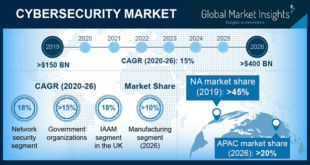In 2019, 1,473 data breaches in the U.S. led to the exposure of 164,683,455 confidential records, as per the Identity Theft Resource Center (ITRC). Additionally, in May 2020 alone, 841,529 records were exposed in 108 data breach incidents. The records ranged from people’s financial and medical information to strongly protected …
Read More »Quantum secure direct communication (QSDC)
Quantum communication refers to a quantum information exchange that uses photons as quantum information carriers over optical fibre or free-space channels. Today, quantum data transfer rates remain quite low, and so communicating entire messages is not yet practical. Instead, Quantum Cryptography or Quantum key distribution (QKD) is being used …
Read More »Remote Security Assessment System (RSAS)
Network vulnerabilities are an increasingly common issue in today’s highly complex computing environments. With exploit attacks appearing faster than ever before, it has become significantly more challenging for organizations to protect against attacks. Only if users could discover these vulnerabilities in their network and proactively get ready before attackers take action, can the losses …
Read More »DARPA Report Finds Vulnerabilities in Blockchain Crypto Transactions
Distributed ledger technologies commonly known as the blockchain, refer to software that stores information on a secure, decentralized network where users need specific cryptographic keys to decrypt and access data. Cryptocurrencies, such as the popular Bitcoin, are networks built on the blockchain, a financial ledger formatted in a sequence of …
Read More »Threat of Quantum computer to Blockchain , Researchers propose Quantum Resistant Ledger (QRL) and Quantum blockchain
Blockchain, is a growing list of records, called blocks, which are linked using cryptography. Blockchains which are readable by the public are widely used by cryptocurrencies. Private blockchains have been proposed for business use. Blockchain a transformative decentralized digital currency, a secure payment platform free from government interference, is being considered …
Read More »International cyber diplomacy and security
Information and communication technology present new challenges to international affairs.The scale and speed of technological advancements in cyberspace are unprecedented. As the fourth industrial revolution dawns, bringing with it the reality of big data, artificial intelligence, and quantum technology, the world is entering a new level of more sophisticated hypoconnectivity, …
Read More »Cyber threats of Cryptocurrency and Cryware
Bitcoin is a digital currency that allows for the transfer of payment between two parties, without the help of a bank—and without government oversight. On average, more than 250,000 bitcoin transactions occur every day, and with a market capitalization in excess of $66 billion, bitcoin has become the largest cryptocurrency in …
Read More »GPS III and NTS-3 Satellites will provide higher acccuracy, jam resistance, and new navigation warfare (NAVWAR) capabilities to US DOD
The Global Positioning System (GPS), is a global navigation satellite system (GNSS) that provides location and time information in all weather conditions, anywhere on or near the Earth where there is an unobstructed line of sight to four or more GPS satellites. GPS has become ubiquitous technology that provides real-time …
Read More »Cyber Security of Industrial control systems (ICS) and SCADA systems
Industrial control system (ICS) is a collective term used to describe different types of control systems and associated instrumentation, which include the devices, systems, networks, and controls used to operate and/or automate industrial processes. Depending on the industry, each ICS functions differently and are built to electronically manage tasks efficiently. …
Read More »Mobile security
The future of computers and communication lies with mobile devices, such as laptops, tablets and smartphones with desktop-computer capabilities. Their size, operating systems, applications and processing power make them ideal to use from any place with an internet connection. And with the expansion of ruggedized devices, the Internet of Things …
Read More » International Defense Security & Technology Your trusted Source for News, Research and Analysis
International Defense Security & Technology Your trusted Source for News, Research and Analysis




